
If you have been using curling irons or hot rollers to coax your hair into soft curls and waves, perhaps it is time to give your locks a rest from heat and go back to an old-fashioned trick: rolling your hair on curlers. While your grandmother may have used rags -- and they are still a good substitute for curlers -- and your mother probably used plastic curlers, you can use soft foam curlers that you can even sleep on overnight. These porous rollers allow air to circulate and dry hair faster. Small rollers will provide a curly look, while larger ones are good for loose curls and waves.
Shampoo your hair, then pat it gently with a towel, leaving it wet but not dripping. If you wish, apply a light coat of mousse, styling gel, lotion or hair spray before you begin setting.
Start at the top front of your hair, using medium rollers. Open the roller clip. Separate a section of hair slightly narrower than the roller and up to 1 inch in thickness. Place the end of the section of hair in front of the roller and roll the roller backward until it touches the scalp, then fasten it with the clip. Don’t pull your hair tightly; roll it loosely on the curlers. Repeat with sections of hair on top of your head.
Roll the back and sides of your hair vertically, at right angles to the floor, to create waves and volume. Use the largest rollers and select larger sections of hair than you did with the front and top sections. The larger the section of hair you wrap, the looser the curl will be. Hold the end of the hair strand behind the roller and roll the roller in toward the scalp. Try alternating the direction of the waves on the back and sides by rolling the rollers vertically, but placing the end of the hair strand in front of the roller and rolling it outward.
Leave your foam curlers in until your hair is dry or overnight. Cover your curlers with a sleep cap so they won’t be disturbed as you sleep. When your hair is dry, remove the curlers carefully and allow the curls to fall into place. Don’t brush your hair; use a hair pick to loosen the curls or spread your fingers and run them into your hair about 1 inch above your scalp and shake them gently.
Related Articles
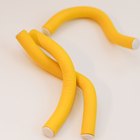
How to Curl Hair With Foam Rollers
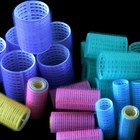
How to Use Hair Rollers for Short Hair

How to Use Rollers to Straighten Hair

How to Curl Bangs Upward

How to Make Gibson-Girl Hairdos

How to Create Loose Curls With a ...

How to Blow-Dry Hair Straight With a ...

How to Use Sponge Rollers to Make Cheer ...
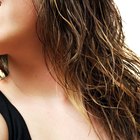
How to Scrunch Straight Hair

Velcro Rollers Vs. Hot Rollers

Clairol Lock Curl Instructions

How to Get Tight Curls for a Straight ...

How to Do Pinup Curls
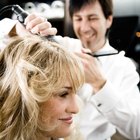
How to Use Remington Curlers

How to Preserve Curls Overnight

How to Get Loose Curls With Curlers

How to Do a Blow-Dry Wrap

How to Reduce Frizz in Permed Hair

How to Get Wavy Curls Without Rollers
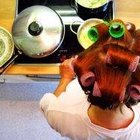
How to Get Wavy Hair Using Curlers
References
Writer Bio
As a long-time newspaper reporter and staff writer, Kay Bosworth covered real estate development and business for publications in northern New Jersey. Her extensive career included serving as editor of a business education magazine for the McGraw-Hill Book Company. The Kentucky native earned a BA from Transylvania University in Lexington.
Photo Credits
Polka Dot Images/Polka Dot/Getty Images